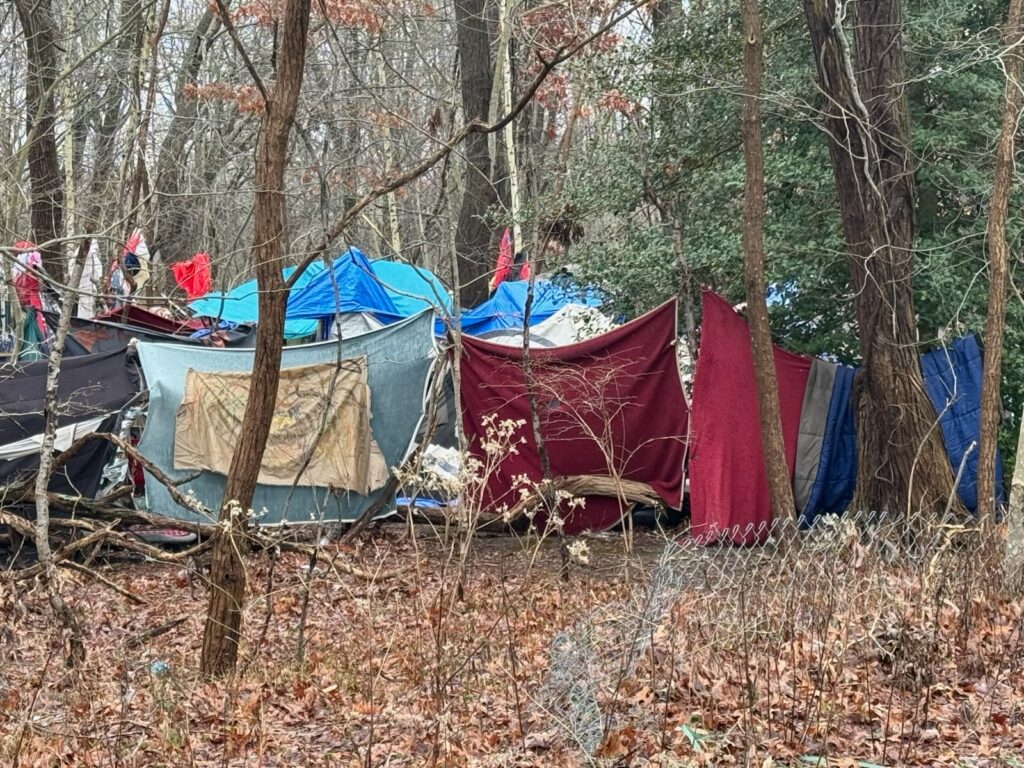A Fatal Eviction: A Profile of One Family’s Despair

Last month, an American flag was still blowing in the January breeze on the Cape Cod on Lincrest Terrace in Union as police gathered evidence at the scene of what was a murder suicide that took the lives of Reuben Alarcon, 51, and Andrea Alacorn, 41 and their two daughters nine-year-old Scarlett and six-year-old Emma who attended Hannah Caldwell Elementary School.
Their bodies were discovered by officers from the Union County Sheriff’s Department who had come to the house to serve an eviction notice on the family whose home of 15 years had been sold out from underneath them at a Sheriff’s sale for $322,000 in November. Investigators believe it was Andrea, described by neighbors as a “loving” mother, who shot her husband and daughters before turning the gun on herself.
Emma’s pre-K teacher told the New York Post the Alacorn family were “very caring, loving, nurturing and generous, describing Andrea as “a dutiful class mom who ‘was on top of everything’ and made Valentine’s Day gifts for her daughter’s 14 classmates.”
New Jersey is the densest state in the nation and yet despite our close proximity to each other social conventions and the shame we dole out for financially falling behind can keep us trapped, isolated in our own living hell while we desperately try to keep up appearances. Now, almost a year since President Biden formally declared the COVID pandemic over, foreclosure and eviction moratoriums that were put in place during the mass death event are no longer in effect and we are seeing surges in both.
INVISIBLE FUNNEL CLOUD
The Alacorn family were swept off this earth by what can only be described as an invisible tornado at the vortex of America’s gun violence, mental health, and affordable housing death spirals. Polite society and our elected leaders are prone to say ‘nobody saw it coming’ as kind of a post-traumatic salve we apply on our collective conscience. This bromide shields us from having to confront the brutality of an economic system that’s fueled by the dispossession and seizure of a family’s home but also funds the campaigns of the people that make the laws and appoint the judges.
While professional Democrats are touting President Biden’s ‘miraculous’ economic recovery they neglect to describe the ongoing misery index that provides essential context to the robust Gross Domestic Product numbers they use to make their case. While we have seen wage growth, which has been stagnate for decades, grow late last year at a faster pace than inflation, during the pandemic the number of households who were paying more than 50 percent of their income for rent continued to surge.
“The U.S. has a shortage of 7.3 million rental homes affordable and available to renters with extremely low incomes,” reports the National Low Income Housing Coalition. “Only 33 affordable and available rental homes exist for every 100 extremely low-income renter households. Extremely low-income renters face a shortage in every state and major metropolitan area. Among states, the supply of affordable and available rental homes ranges from only 17 affordable and available homes for every 100 extremely low-income renter households in Nevada to 58 in South Dakota. In 12 of the 50 largest metro areas in the country, the absolute shortage of affordable and available homes for extremely low-income renters exceeds 100,000 units.”
In New Jersey, there are 323,284 households that fall into that extremely low income cohort and 74 percent of them are “cost burdened” which means paying for housing is forcing them to shortchange other essentials like food or healthcare, according to the National Low Income Housing Coalition. In our state there are just 31 affordable housing units available for every hundred families in need of a place to live.
“Americans are losing their homes at a faster rate this year as banks make up for lost time after state and federal foreclosure bans expired,” reported CBS MoneyWatch. “Lenders repossessed nearly 96,000 properties during the first three months of 2023, up 22 percent from the same period last year, according to real estate data provider ATTOM.”
According to the most recent data, New Jersey ranks third in the nation for foreclosures, behind Maryland and Connecticut. According to SoFi Learn, a personal finance website, one in every 2,775 homes in our state was in foreclosure at the start of the year with 1,347 in foreclosure out of 3.7 million housing units. The hardest hit counties are Cumberland, Gloucester, Warren, Sussex and Atlantic.
RENTS HIKES HIGHER THAN INFLATION
In August, the New Jersey Monitor reported that as the eviction moratorium ended on Jan. 1, 2022 the state’s official homeless numbers ticked past 10,000 for the first time since 2015. “Rents are rising. New Jersey’s median rent in December 2022 was $2,723 — 8.38 percent higher than the same time the previous year and higher than the national median of $2,007, according to a Rent.com report,” according to the news source. “Rental vacancies fell. New Jersey had a 3.7 percent rental vacancy rate last year, down from an 11.2 percent a decade ago, according to the St. Louis Federal Reserve Bank.”
While economists credited the Federal Reserve and the White House for a ‘soft landing’ of the economy, it was actually a crash landing for many who had already been hanging on by a thread during the pandemic.
According to last year’s Point-in-Time Count, which is mandated by the federal government for all communities that have gotten federal homeless assistance, roughly 653,100 people were experiencing homelessness, the highest such count since reporting started in 2007. In that single night count, there were close to 35,000 people under the age of 25 without shelter that are categorized as unaccompanied youth.
In New Jersey, that Point-in-Time Count in January of 2023 identified 7,408 households, including 10,267 persons, that were experiencing homelessness with almost 2,000 people identified as chronically homeless and 1,416 people actually unsheltered the night of the count.
Walter Herres is the executive director of SHILO, (Supporting Homeless and Innovatively Loving Others), a grass roots non-profit working primarily in New Brunswick who himself is now dealing with homelessness. He is also very active with the New Jersey Poor People’s Campaign and has been extensively trained in helping at-risk individuals regain their footing. During a phone interview with InsiderNJ, Herres said the Point-in-Time Count upon which so many policy decisions are based, vastly undercounts the number of people who are caught up in the worsening shelter crisis.
“These are fairy tale statistics. There’s no way that on one night in January that you are going to go out and find all of the homeless meaning you would walk right past me if I had on some new Jordan sneakers with a nice jacket on and I put on cologne—You would have walked right past me with your clipboard,” Herres explained. “There’s a national shortage of affordable housing” and the reality is we see people of all races “forced into nomadic living in their cars.”
Herres contrasted how the nation gears up for lost dogs with how it handles the unsheltered.
“If you report your dog missing in America we will go outside with a van and will go around to try and pick your dog up and shelter it until you can pick it up,” Herres said. “That’s where we are in America.” New Jersey’s shelter crisis is really acute in Trenton, the state capital. “They have so many abandoned houses in Trenton—They just found the body of a homeless person that died in one—that’s where most of the homeless live—in those abandoned buildings,” Herres said.
A MAYOR’S LAMENT
Trenton Mayor Reed Gusciora knows all too well the challenge of having a vast stock of vacant homes, a city with a significant homeless population, and a dearth of resources to address both.
“We just had a row house fire and five houses went up and the problem is we have squatters coming in and it’s cold and they start fires to get warm,” Gusciora told InsiderNJ during a phone interview. Gusciora, who also served in the state legislature, estimates his city has “well over 1,000” of these residential properties in various stages of disrepair. “A lot of these houses have slipped into decay, so we have to fix roofs and porches. The pipes are gone and it’s almost cost prohibitive to save them.”
Across New Jersey, there are thousands upon thousands of vacant homes that are boarded up falling deeper and deeper into neglect posing public safety and fire risks to our most fragile neighborhoods. Meanwhile, we read isolated local newspaper accounts of homeless encampments in Neptune or in the woods behind Shop-Rite, in Atlantic City next to the Golden Nugget.
In our post-pandemic economic recovery, we just cranked back up the conveyor belt that carries families that had been sheltered, out on to the streets with the resumption of foreclosures and evictions. It’s like we just threw a switch and let the grinding begin without any regard for the potential human consequences like we saw with the Alarcon family’s tragedy.
It’s all right and just is what we tell ourselves. We can’t have people living someplace for free, why that’s not fair to everybody else that has to pay for shelter and here in New Jersey, when property rights bump up against human rights, you know what and who will prevail. It’s in the Garden State’s DNA. Afterall, we were a northern state that had no trouble turning over run-away slaves to the agents of their masters.
Property is property.








The reason the rents are so high is that the taxes are so high. I Pay over 14,000 in Elizabeth on a 2 family.
Bob , you have no idea what caused this tragedy. To blame it on”Professional Democrats” is a testament to lack of total understanding of the issue. Do a little research if you want to write an article throwing blame on the Democrats without knowing the family issues that lead up to this unfortunate event. Granted the foreclosure moratorium has contributed to the increase in volume but dig deep before you write an article like this.
Brutal but accurate.